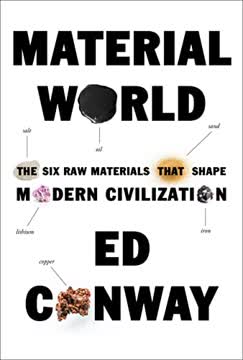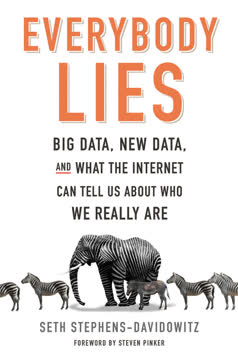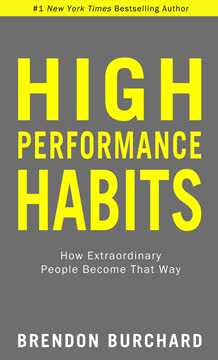Key Takeaways
1. Sound Affects Everything: Harness Its Power for Happiness, Effectiveness, and Wellbeing
Working in 4 powerful but largely unnoticed ways, sound (especially how we speak and how we listen) affects almost everything we feel, think and do.
The Power of Sound. Sound, often overlooked, profoundly influences our lives, impacting our happiness, effectiveness, and wellbeing. Noise creates stress and misery, while pleasing sounds evoke positive emotions. Conscious management of sound can transform negative effects into positive ones, enhancing our overall quality of life.
Three Core Outcomes. The book distills the effects of sound into three core outcomes: happiness, effectiveness, and wellbeing. Happiness is linked to connectedness and service, both enhanced by strong communication skills. Effectiveness relies on mastering speaking and listening to lead and inspire. Wellbeing is directly affected by sound, with noise causing health issues and carefully chosen sounds promoting healing.
Context is Key. Speaking and listening always occur within a context, often unhelpful due to noisy environments or poor design. By considering the context, we can optimize communication by adjusting the time or space. Recognizing the power of sound allows us to manage our environment, avoid unhealthy noise, and surround ourselves with sounds that support our wellbeing.
2. Unmask the Four Leeches: Conquer Fear and Unleash Your Communication Potential
The main reason for the negative impact of the leeches is that the underlying emotion giving rise to all 4 of them is fear.
Emotional Drivers. The "Four Leeches" – Looking Good, Being Right, People-Pleasing, and Fixing – are emotional drivers that drain power from communication, rooted in fear. These leeches, if left unchecked, can compromise our ability to listen well and speak effectively. Recognizing these drivers is the first step to lessening their influence.
The Leeches Defined.
- Looking Good: Prioritizing appearances over genuine connection.
- Being Right: Needing to be correct, often at the expense of others.
- People-Pleasing: Seeking approval to the detriment of personal truth.
- Fixing: Attempting to resolve others' emotions rather than allowing them to process them.
Mindfulness is Key. By shining the light of mindfulness on these leeches, we can diminish their power. Recognizing their existence within us allows us to prevent them from dominating our interactions. This awareness fosters more authentic and effective communication.
3. Slay the Seven Deadly Sins: Speak with Integrity and Captivate Your Audience
Most of our censure of others is only oblique praise of self, uttered to show the wisdom and superiority of the speaker.
Habitual Traits. The "Seven Deadly Sins" of speaking – Gossip, Condemning, Negativity, Complaining, Excuses, Lying, and Dogmatism – are habitual traits that diminish our ability to connect with others. These sins, fueled by the Four Leeches, make us harder to listen to and less effective in our communication. Recognizing and addressing these sins is crucial for building stronger relationships.
The Sins Defined.
- Gossip: Speaking ill of someone who is not present.
- Condemning: Habitually finding fault and criticizing.
- Negativity: Maintaining a consistently pessimistic outlook.
- Complaining: Moaning about things beyond our control.
- Excuses: Avoiding responsibility by blaming others.
- Lying: Distorting the truth to impress or deceive.
- Dogmatism: Insisting on being right and unwilling to consider other perspectives.
Cultivating Positive Communication. By consciously abstaining from these sins, we can cultivate more positive and engaging communication habits. This involves practicing gratitude, taking responsibility, and embracing humility. The result is more authentic and impactful interactions.
4. Navigate the AGENTS of Miscommunication: Master Clarity and Connection
We are meaning-making machines, and we often collapse what happened with what we made it mean.
Common Adversaries. The acronym AGENTS represents six common adversaries of effective speaking and listening: Assumptions, Generalizations, Emotions, Noise, Time, and Semantics. These factors can distort our perceptions and hinder our ability to connect with others. By becoming aware of these agents, we can manage them and improve our communication.
The AGENTS Defined.
- Assumptions: Unexamined beliefs that shape our perceptions.
- Generalizations: Broad statements that oversimplify reality.
- Emotions: Feelings that can cloud our judgment and distort our message.
- Noise: External and internal distractions that interfere with listening.
- Time: Lack of sufficient time to listen and communicate effectively.
- Semantics: Differences in meaning and interpretation of words.
Strategies for Mitigation. To overcome these adversaries, we must challenge our assumptions, be specific in our language, manage our emotions, minimize distractions, allocate sufficient time for communication, and clarify our meanings. This conscious effort leads to clearer and more meaningful interactions.
5. Hearing vs. Listening: Unlock the Power of Conscious Reception
Truly listening to someone requires all of your attention.
Two Distinct Processes. Hearing is a physiological process, while listening is a skill that requires conscious effort. Listening involves filtering, interpreting, and creating meaning from sound. In our ocular society, this crucial skill is often ignored, leading to misunderstandings and missed opportunities.
Three Kinds of Listening.
- Outer Listening: Making meaning from sounds in our environment.
- Inner Listening: Paying attention to our internal voice and thoughts.
- Created Listening: Recognizing how our actions and words shape how others listen to us.
The Listening Filters. Our listening is shaped by a unique set of filters, including culture, language, values, attitudes, beliefs, expectations, intentions, and emotions. Recognizing these filters allows us to control them and improve our ability to understand others.
6. Seven Practices to Transform Your Listening: From Silence to Empathy
Nature hath given men one tongue but 2 ears, that we may hear from others twice as much as we speak.
Conscious Listening. Conscious listening is a subset of conscious living, requiring awareness and mindfulness. By setting the intention to listen consciously, we open ourselves to a new dimension of experience. These practices will help revitalize your listening in relationships, rebuilding and renewing intimacy.
Seven Listening Practices:
- Silence: Regularly experiencing silence to recalibrate our hearing.
- The Mixer: Identifying individual sound sources in complex environments.
- Savoring: Appreciating and discerning enjoyable sounds.
- Listening With: Engaging our ears, eyes, and heart in the listening process.
- Listening From: Shifting our listening position to understand different perspectives.
- Listening For: Actively seeking specific information or insights.
- RASA: Receive, Appreciate, Summarize, and Ask to enhance conversational engagement.
Benefits of Conscious Listening. These practices enhance our relationships, improve our health, increase our influence, boost our productivity, and foster personal growth. By mastering these skills, we can transform our communication and create more meaningful connections.
7. HAIL the Foundations: Speak with Honesty, Authenticity, Integrity, and Love
Honesty is the first chapter in the book of wisdom.
Four Cornerstones. HAIL represents the four cornerstones of powerful speaking: Honesty, Authenticity, Integrity, and Love. These principles provide a solid foundation for effective communication, ensuring that our words resonate with truth and sincerity. By embodying these qualities, we can inspire trust and create lasting impact.
The HAIL Principles Defined.
- Honesty: Speaking without falsehood and with clarity.
- Authenticity: Being true to oneself and avoiding artificial personas.
- Integrity: Aligning words with actions and being reliable.
- Love: Speaking from a place of well-wishing and kindness.
Practical Application. By integrating these principles into our speaking, we can transform our communication and create more meaningful connections. This involves being clear and direct, standing in our own truth, honoring our commitments, and speaking from a place of genuine care.
8. Craft Perfect Content: Intentions, Ideas, and Engaging Storytelling
If you want to make a difference in the world, you will most likely need to inspire others, and you may need to be a leader. Your voice is the most powerful tool you have for these things.
Intentions First. Before crafting content, clarify your intentions for yourself, your audience, and their intentions coming in. This ensures that your message is aligned with your goals and resonates with your listeners. Understanding your audience's needs and expectations is crucial for effective communication.
The Big Idea. Identify the core message you want to convey, summarizing it in a concise statement. Then, ask "So what?" to ensure that your message is relevant and valuable to your audience. A clear and compelling Big Idea provides a strong foundation for your content.
Content Design Systems.
- 4MAT: Address the needs of imaginative, analytic, common-sense, and dynamic learners.
- Think-Feel-Know: Engage the cerebral cortex, limbic system, and basal region of the brain.
Storytelling is Key. Use stories to illustrate your points, create emotional connections, and make your message more memorable. Stories can be personal anecdotes, historical events, or even fictional tales. The key is to choose stories that resonate with your audience and support your message.
9. Master Your Vocal Toolbox: From Posture to Prosody, Command Your Instrument
Your voice is your breath projected into the world; it’s the only part of you that you can send forth outside of your own body.
The Human Voice. The human voice is a complex and versatile instrument that can be mastered with training and practice. This involves understanding the mechanics of voice production, from breath control to vocal cord vibration. By developing our vocal skills, we can enhance our ability to express ourselves clearly and powerfully.
Key Elements of Vocal Delivery:
- Posture: Maintaining proper alignment for optimal vocal cord function.
- Breath: Using deep, diaphragmatic breathing to fuel the voice.
- Register: Understanding and utilizing different vocal registers for varied effects.
- Pace: Varying speech rate to create emphasis and excitement.
- Pitch: Modulating pitch to convey emotion and meaning.
- Prosody: Using intonation, rhythm, and stress to enhance engagement.
- Timbre: Cultivating a rich, warm, and smooth vocal quality.
- Volume: Controlling volume to project authority and create intimacy.
Conscious Practice. By consciously practicing these elements, we can transform our speaking voice and become more effective communicators. This involves experimentation, self-reflection, and seeking feedback from others.
10. Stagecraft Secrets: Venue, Timing, and Tech to Captivate Any Audience
The human brain starts working the moment you are born and never stops until you stand-up to speak in public.
Venue Selection. When choosing a venue, consider location, accessibility, amenities, and the overall atmosphere. Visit the venue in advance to assess its suitability and address any potential issues. A well-chosen venue can enhance your presentation and create a positive experience for your audience.
Timing is Everything. Be mindful of scheduling your event to avoid conflicts with holidays or peak traffic times. Accurately time your content and stick to the agreed-upon schedule. Respecting your audience's time is crucial for maintaining their engagement.
Tech Mastery. Familiarize yourself with the technology you'll be using, including audio-visual equipment, presentation software, and internet connectivity. Conduct thorough testing to ensure that everything is working properly. Having a backup plan is essential for addressing any technical glitches that may arise.
Last updated:
FAQ
1. What is How to be Heard: Secrets for Powerful Speaking and Listening by Julian Treasure about?
- Focus on sound communication: The book explores the art and science of speaking and listening, emphasizing how sound shapes our happiness, effectiveness, and wellbeing.
- Skills, not just traits: Julian Treasure argues that both speaking and listening are learnable skills, offering practical exercises to help readers become conscious communicators.
- Context and environment: It highlights the importance of the sound environment and context in communication, including how noise and ambient sound affect our ability to connect.
- Interactive communication model: The book presents speaking and listening as circular, interactive processes, not just linear exchanges.
2. Why should I read How to be Heard by Julian Treasure?
- Improve relationships and influence: The book provides tools to connect deeply, inspire, persuade, and be understood in personal and professional settings.
- Boost wellbeing and happiness: Mastering conscious listening and speaking can reduce stress, improve health, and increase happiness.
- Practical, research-based guidance: Treasure offers actionable exercises and frameworks developed from years of research and workshops.
- Address modern challenges: The book tackles issues like noise pollution, technology’s impact, and declining listening skills, providing strategies to overcome them.
3. What are the key takeaways from How to be Heard by Julian Treasure?
- Active, conscious listening: Effective listening requires humility, awareness, respect, attention, and humor, and can be practiced using the RASA method.
- Powerful speaking foundations: Honesty, Authenticity, Integrity, and Love (HAIL) are essential for impactful, ethical communication.
- Content, delivery, and context: Great communication depends on clear intentions, structured content, and engaging delivery.
- Preparation is crucial: Rehearsal, warm-up, and technical checks are vital for confident public speaking.
4. What are the four powerful effects of sound described in How to be Heard by Julian Treasure?
- Physiological effects: Sound influences bodily functions like heart rate, breathing, and hormone secretion; sudden noises can trigger stress, while gentle sounds calm us.
- Psychological effects: Sound shapes emotions and moods; music and natural sounds can evoke safety, joy, or alertness.
- Cognitive effects: Noise, especially unpredictable or conversational, can drastically reduce concentration and productivity.
- Behavioral effects: Sound can alter human behavior, such as walking speed or spending habits, and well-designed soundscapes can reduce crime.
5. What are the "7 Deadly Sins" of speaking according to How to be Heard by Julian Treasure?
- Gossip: Speaking ill of others erodes trust and credibility.
- Condemning and negativity: Habitual criticism and pessimism alienate listeners and drain energy.
- Complaining and excuses: Useless moaning and avoiding responsibility spread misery and undermine growth.
- Exaggeration, lying, and dogmatism: Embellishing facts or insisting on being right destroys credibility and blocks open dialogue.
6. What are the "4 Leeches" that rob power from speaking and listening in How to be Heard by Julian Treasure?
- Looking Good: The urge to impress leads to inauthentic communication and competitive speaking.
- Being Right: The need to win arguments causes interrupting and conflict, undermining dialogue.
- People-Pleasing: Fear of rejection leads to agreeing insincerely and losing authenticity.
- Fixing: The compulsion to solve others’ problems can block genuine expression and healing.
7. What is the RASA method in How to be Heard by Julian Treasure and how does it improve listening?
- RASA explained: RASA stands for Receive, Appreciate, Summarize, and Ask—a four-step process for active, engaged listening.
- Positive feedback loop: Appreciating and summarizing show the speaker they are heard, encouraging deeper sharing.
- Builds engagement and trust: Asking questions demonstrates interest and involvement, transforming conversations.
- Practical application: Practicing RASA in daily life leads to more focused, productive, and empathetic communication.
8. What does the HAIL framework stand for in How to be Heard by Julian Treasure and why is it important?
- HAIL defined: Honesty, Authenticity, Integrity, and Love are the four pillars of powerful, ethical speaking.
- Honesty and clarity: Speaking clearly and directly builds trust and avoids confusion.
- Authenticity and integrity: Being yourself and keeping your word create genuine connection and credibility.
- Love in communication: Wishing others well fosters rapport and makes your message more warmly received.
9. How does Julian Treasure define "listening filters" in How to be Heard and why do they matter?
- Unique personal filters: Everyone listens through filters shaped by culture, beliefs, emotions, and expectations, making each listening experience unique.
- Filters shape perception: These filters act like a bunker window, limiting what we hear and how we interpret it.
- Awareness enables change: Becoming conscious of your filters allows you to adjust them and expand your understanding.
- Improved communication: Adjusting filters leads to better listening, deeper empathy, and more effective conversations.
10. What are the three kinds of listening described in How to be Heard by Julian Treasure?
- Outer Listening: Attending to external sounds, including language and environmental noise.
- Inner Listening: Noticing your inner voice and self-talk, which shapes self-perception and emotions.
- Created Listening: Recognizing the listening others bring, shaped by their unique filters, which co-creates the communication dynamic.
11. What vocal techniques and stagecraft does Julian Treasure recommend in How to be Heard for powerful speaking?
- Vocal toolbox: Develop awareness of voice registers (modal, falsetto, chest, nasal, throat) and practice moving between them for variety and power.
- Posture and gestures: Maintain good posture and use intentional, congruent gestures to reinforce your message.
- Pace, pitch, and prosody: Vary your speaking rate and pitch, and use prosody to add meaning and avoid monotony.
- Stagecraft essentials: Prepare thoroughly, rehearse, warm up, and use the BESS routine (Breathe, Expand vision, Stance, Smile) before speaking.
12. What exercises and practices does How to be Heard by Julian Treasure recommend to improve speaking and listening skills?
- RASA practice: Apply Receive, Appreciate, Summarize, and Ask in daily conversations to enhance engagement.
- Clarity exercises: Review your communication for jargon and indirectness, and practice making direct requests.
- Vocal and posture exercises: Record your voice, practice breathing, and use wall/mirror exercises to improve vocal strength and stance.
- Stage warm-up: Warm up your body and voice before speaking, and use the BESS routine to connect confidently with your audience.
Review Summary
How to be Heard receives mixed reviews, with an average rating of 3.65/5. Many readers find the book helpful for improving speaking and listening skills, praising its practical tips and exercises. Some appreciate the insights on sound's impact and the importance of effective communication. However, criticisms include repetitiveness, occasional lack of depth, and excessive focus on TED talks. While some find the content basic or common sense, others value the comprehensive approach to verbal and non-verbal communication. The audiobook version is particularly well-received for its demonstration of speech techniques.
Similar Books










Download PDF
Download EPUB
.epub digital book format is ideal for reading ebooks on phones, tablets, and e-readers.




